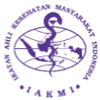CONGENITAL MALFORMATIONS OF THE CENTRAL NERVOUS SYSTEM AMONG NEWBORNS DELIVERED AT TERTIARY HEALTH CARE HOSPITAL IN INDIA: A CROSS-SECTIONAL STUDY
Downloads
Background: Malformations of the central nervous system (CNS) are a significant contributor to childhood morbidity and death. Congenital CNS abnormalities may result in long-term disability that affects not only the child's development and well-being but also families, the medical system, and society as a whole. Purpose: The purpose of this study is to determine the incidence, type, and associated risk factors of CNS malformations in newborns who were delivered to the Obstetrics and Gynecology department of Netaji Subhash Chandra Bose Medical College (NSCB Medical College). Methods: An observational hospital-based study was carried out in the departments of pediatrics and obstetrics and gynecology at the NSCB Medical College and Hospital in Jabalpur. Data was entered into MS Excel, and IBM-SPSS 23.0 was used to perform descriptive and inferential statistical analysis. During a one-year study period, 40 cases of CNS malformation out of 7117 deliveries were found to have occurred either before or after birth. Results: During the study period, 40 cases of CNS malformation out of 7117 deliveries were identified either prenatally or at birth, making an incidence of 0.5%. Of all CNS anomalies, hydrocephalus accounted for 52.5 percent, whereas neural tube defects accounted for 27.5 percent. The other two main CNS abnormalities identified in utero were ventriculomegaly and midline defects. Conclusion: This study identified CNS malformations in newborns, with hydrocephalus and neural tube defects as the most common types. Key risk factors included younger maternal age, rural residence, inadequate antenatal care, adverse obstetric history, chronic illness, polyhydramnios, and maternal addiction.
Aydın, E., Tanacan, A., Büyükeren, M., Uçkan, H., Yurdakök, M., & Beksaç, M. S. 2019. Congenital central nervous system anomalies: Ten-year single center experience on a challenging issue in perinatal medicine. Journal of the Turkish German Gynecological Association, 20(3), 170–177. https://doi.org/10.4274/jtgga.galenos.2018.2018.0079
Bulut, H. K., Köse, D. P., & Güvercin, A. R. 2025. Balancing care and well-being: A study on the quality of life of primary caregivers parents of children with central nervous system congenital anomalies. Journal of pediatric nursing, 83, 183–189. https://doi.org/10.1016/j.pedn.2025.05.003
Dewan, M. C., Rattani, A., Mekary, R., Glancz, L. J., Yunusa, I., Baticulon, R. E., Fieggen, G., Wellons, J. C. III, Park, K. B., & Warf, B. C. 2018. Global hydrocephalus epidemiology and incidence: systematic review and meta-analysis. Journal of Neurosurgery, 130(4), 1065–1079. https://doi.org/10.3171/2017.10.JNS17439
Eke, C. B., Uche, E. O., Chinawa, J. M., Obi, I. E., Obu, H. A., & Ibekwe, R. C. 2016. Epidemiology of congenital anomalies of the central nervous system in children in Enugu, Nigeria: A retrospective study. Annals of African medicine, 15(3), 126-132. https://doi.org/10.4103/1596-3519.188892
Estevez-Ordonez, D., Dewan, M. C., Feldman, M. J., Montalvan-Sanchez, E. E., Montalvan-Sanchez, D. M., Rodriguez-Murillo, A. A., Urrutia-Argueta, S. A., Cherry, C. B., Morgan, D. R., Alvarez-Rodriguez, R., & Bonfield, C. M. 2017. Congenital Malformations of the Central Nervous System in Rural Western Honduras: A 6-Year Report on Trends. World neurosurgery, 107, 249–254. https://doi.org/10.1016/j.wneu.2017.07.131
Ghanghoriya, V., Patel, K., & Ghanghoriya, P. 2018. Prevalence and pattern of congenital anomalies at tertiary health care hospital. International Journal of Clinical Obstetrics and Gynaecology, 2(3), 102-105. https://doi.org/10.33545/gynae.2018.v2.i3b.86
Gunnarsdottir, A. B., Thorsteinsdottir, S. L., Hjartardottir, H., & Hardardottir, H. 2019. Laeknabladid, 105(12), 547–553. https://doi.org/10.17992/lbl.2019.12.260
Manzoor, U., Saad, M., Ali, S., Bano, S., Shahzad, U., & Zain, M. 2024. Prevalence and Types of Congenital Anomalies in Singleton Pregnancies at a Tertiary Care Hospital. Cureus, 16(12), e76506. https://doi.org/10.7759/cureus.76506
Mehta, S., et al. 2017. Maternal smoking and alcohol use during pregnancy and the risk of congenital malformations. Pediatric International, 59(9), 912-917.
Nagaraj, U. D., Venkatesan, C., Bierbrauer, K. S., & Kline-Fath, B. M. 2022. Value of pre- and postnatal magnetic resonance imaging in the evaluation of congenital central nervous system anomalies. Pediatric radiology, 52(4), 802–816. https://doi.org/10.1007/s00247-021-05137-1
Pandey, A., Singh, K., & Bhattacharya, P. 2019. Prevalence and risk factors of congenital anomalies: A hospital-based study. International Journal of Pediatrics and Neonatal Care, 5(2), 1-7. https://doi.org/10.28933/ijpnc-2019-02-1507
Patel, Z. 2017. Demographic and obstetric factors associated with congenital anomalies in Madhya Pradesh. Journal of Obstetrics and Gynaecology of India, 67(3), 205-210. https://doi.org/10.1007/s13224-017-0938-5
Siddesh, A., Gupta, G., Sharan, R., Agarwal, M., & Phadke, S. R. 2017. Spectrum of prenatally detected central nervous system malformations: Neural tube defects continue to be the leading foetal malformation. The Indian journal of medical research, 145(4), 471–478. https://doi.org/10.4103/ijmr.IJMR_1882_14
Singh, M., & Sharma, R. 2020. Preventive strategies and early interventions for congenital anomalies in India. Journal of Public Health Policy, 41(1), 105-117. https://doi.org/10.1057/s41271-019-00170-0
Sinha, A., P, P., Chakraborty, H., Barnwal, R.K., & Sinha, R. 2024. Burden of neural tube defects in India: a systematic review and meta-analysis. Child's Nervous System, 40, 4123–4135 https://doi.org/10.1007/s00381-024-06627-x
Tan, A. G., Sethi, N., & Sulaiman, S. 2022. Evaluation of prenatal central nervous system anomalies: obstetric management, fetal outcomes and chromosome abnormalities. BMC pregnancy and childbirth, 22(1), 210. https://doi.org/10.1186/s12884-022-04555-9
Tao, H., Wu, J., Han, Y., Zhang, B., & Zhai, J. 2024. Genetic etiology and pregnancy outcomes of fetuses with central nervous system anomalies. Archives of gynecology and obstetrics, 309(6), 2567–2574. https://doi.org/10.1007/s00404-023-07152-z
Viswanathan, M., Urrutia, R. P., Hudson, K. N., Middleton, J. C., & Kahwati, L. C. 2023. Folic acid supplementation to prevent neural tube defects: Updated evidence report and systematic review for the US Preventive Services Task Force. JAMA, 330(5), 460–466. https://doi.org/10.1001/jama.2023.9864

This work is licensed under a Creative Commons Attribution-NonCommercial-ShareAlike 4.0 International License.
Copyright of the article is transferred to the journal, by the knowledge of the author, whilst the moral right of the publication belongs to the author. In order to be accepted and published by JPH RECODE, author(s) submitting the article manuscript should complete all the review stages. By submitting the manuscript, the author(s) agreed to these following terms:
The copyright of accepted articles shall be assigned to JPH RECODE as the publisher of the journal. The intended copyright includes the rights to publish articles in various forms (including reprints). JPH RECODE maintain the publishing rights to the published articles.
Authors are permitted to disseminate published article by sharing the link/DOI of the article at JPH RECODE. Authors are allowed to use their articles for any legal purposes deemed necessary without written permission form JPH RECODE with an acknowledgement of initial publication to this journal.
The Copyright Transfer Agreement Form can be downloaded ON THIS FORM.





















